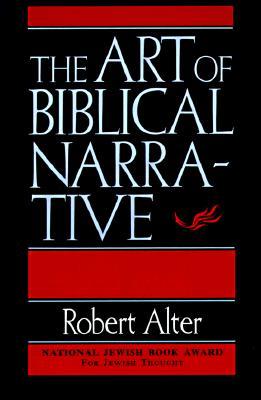Robert Alter’s ‘The Art of Biblical Narrative’ and Qur’anic Narrative
By Leyla Ozgur Alhassen
Robert Alter’s The Art of Biblical Narrative[1] is an introduction to the literary elements of Biblical narrative, and can be an extremely useful work for scholars of Qur’anic narrative. Below, I highlight certain aspects of Alter’s analysis of Biblical repetition and type-scenes, which can be especially useful for studies of Qur’anic narrative style.
 According to Alter, Biblical narrative establishes patterns of repetition and then makes strategic changes in them; this can then serve the purpose of “commentary, analysis, foreshadowing, thematic assertion”[2] and “development of plot.”[3] We thus see “how substantially the same materials can be redeployed in order to make different points.”[4]
According to Alter, Biblical narrative establishes patterns of repetition and then makes strategic changes in them; this can then serve the purpose of “commentary, analysis, foreshadowing, thematic assertion”[2] and “development of plot.”[3] We thus see “how substantially the same materials can be redeployed in order to make different points.”[4]
When we discuss repetition, it is useful to realize that there are many forms in which repetition can occur. Alter includes a list of repetitive techniques found in Biblical narrative, and all of them can be found in the Qur’an. His list moves from a small to a large scale: 1) Leitwort, the semantic root of a word is used repeatedly and in a variety of ways; 2) Motif, “a concrete image, sensory quality, action, or object recurs through a particular narrative”; 3) Theme, “an idea which is part of the value-system of the narrative . . . is made evident in some recurring pattern”; 4) Sequence of actions, a sequence of actions is repeated in “three consecutive repetitions, or three plus one, with some intensification or increment from one occurrence to the next, usually concluding either in a climax or a reversal”; and 5) Type-scene, “an episode . . . in the career of the hero which is composed of a fixed sequence of motifs.”[5]
The type-scene is a particular kind of repetition, which Alter discusses in detail. Alter lists examples of type-scenes in the Bible; many are also found in the Qur’an: “the annunciation . . . of the birth of the hero to his barren mother; the encounter with the future betrothed at a well; the epiphany in the field; the initiatory trial; danger in the desert and the discovery of a well or other source of sustenance; the testament of the dying hero.”[6] It would no doubt be a fruitful project to compare this list with Qur’anic narrative, and to see if there are other type-scenes more commonly found in the Qur’an. As with other kinds of repetition, the type-scene can be used in different ways; it can be “aborted,”[7] or “the total suppression of a type-scene may be a deliberate ploy of characterization and thematic argument.”[8]
According to Alter, the type-scene serves “an eminently monotheistic purpose: to reproduce in narrative the recurrent rhythm of a divinely appointed destiny in Israelite history.”[9] It would be worthwhile to explore ways in which the type-scene and other Qur’anic narrative devices similarly serve a monotheistic purpose in the Qur’an. In Alter’s work, we can see many ways in which insights from studies of Biblical narrative—repetition and type-scenes in particular—can be usefully applied to studies of Qur’anic narrative, and similarly be used to serve monotheistic purposes.
© International Qur’anic Studies Association, 2013. All rights reserved.
[1] Robert Alter, The Art of Biblical Narrative. New York: BasicBooks, 1981.
[2] Alter, p. 91.
[3] Alter, p. 100.
[4] Alter, p. 56.
[5] Alter, pp. 95-96.
[6] Alter, p. 51.
[7] Alter, p. 60.
[8] Alter, p. 61.
[9] Alter, p. 60.
